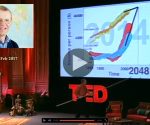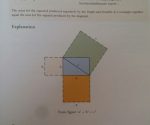6 Famous International Physicists who were influenced by Hinduism: Detechter.com
Science and religion don’t normally go together. We’ve seen scientists dissing out people with religious beliefs, and vice versa. While religion might not be “logical” to some, but Hinduism has proven to have some science behind it. And as such, there are scientists who have been influenced by Hinduism. Here are some of the international figures in the world of science who have taken inspiration from Hinduism, and their own quotes about their influences and Hinduism:
Alexander Supertramp
Source: http://detechter.com/6-famous-international-physicists-who-were-influenced-by-hinduism/
1. Erwin Schrödinger
You might have already known about Schrödinger’s cat. If not, then you should at least know that it’s a very famous experiment, and the inferences have a great value in the world of science. That was one of the many scientific experiments Erwin Schrödinger is known for. The Austrian physicist also won Nobel Prize in Physics in 1933.

But if you read his biography and some of the works he has published, then you will realize the influence of Hinduism in his works:
- “This life of yours which you are living is not merely a piece of this entire existence, but in a certain sense the whole; only this whole is not so constituted that it can be surveyed in one single glance. This, as we know, is what the Brahmins [wise men or priests in the Vedic tradition] express in that sacred, mystic formula which is yet really so simple and so clear; tat tvam asi, this is you. Or, again, in such words as “I am in the east and the west, I am above and below, I am this entire world.” [Schrödinger,’Meine Weltansicht’ (My View of the World), 1961]
- “The multiplicity is only apparent. This is the doctrine of the Upanishads. And not of the Upanishads only. The mystical experience of the union with God regularly leads to this view, unless strong prejudices stand in the West.”[Erwin Schrödinger, What is Life?, p. 129, Cambridge University Press]
- “From the early great Upanishads, the recognition Atman = Brahman (the personal self equals the omnipresent, all-comprehending eternal self) was in Indian thought considered, far from being blasphemous, to represent, the quintessence of deepest insight into the happenings of the world. The striving of all the scholars of Vedanta was, after having learned to pronounce with their lips, really to assimilate in their minds this grandest of all thoughts.” [From essay on determinism and free will]
- “Most of my ideas & theories are heavily influenced by Vedanta”
- “There is no kind of framework within which we can find consciousness in the plural; this is simply something we construct because of the temporal plurality of individuals, but it is a false construction… The only solution to this conflict insofar as any is available to us at all lies in the ancient wisdom of the Upanishad.” (Mein Leben, Meine Weltansicht [My Life, My World View] (1961), Chapter 4)
2. Werner Heisenberg
Known for his renowned uncertainty principle, Werner Heisenberg is a key figure in the world of quantum mechanics. You might have also heard about him in Breaking Bad. That kept aside, the German Nobel Prize winner for Physics is believed to have understood much of quantum mechanisms through his mystical experience in Hinduism.

Here are some proofs of it:
- In Uncommon Wisdom: Conversations With Remarkable People (1988), Frtjof Capra writes about the conversation between Rabindranath Tagore and Werner Heisenberg: “He began to see that the recognition of relativity, interconnectedness, and impermanence as fundamental aspects of physical reality, which had been so difficult for himself and his fellow physicists, was the very basis of Indian spiritual traditions.”
- In The Holographic Paradigm (pg. 217-218), there is a text that talks about Renee Weber’s interview with Fritjof Capra. Capra states that Schrödinger in speaking about Heisenberg has said: “I had several discussions with Heisenberg. I lived in England then [circa 1972], and I visited him several times in Munich and showed him the whole manuscript chapter by chapter. He was very interested and very open, and he told me something that I think is not known publicly because he never published it. He said that he was well aware of these parallels. While he was working on quantum theory he went to India to lecture and was a guest of Tagore. He talked a lot with Tagore about Indian philosophy. Heisenberg told me that these talks had helped him a lot with his work in physics because they showed him that all these new ideas in quantum physics were in fact not all that crazy. He realized there was, in fact, a whole culture that subscribed to very similar ideas. Heisenberg said that this was a great help for him. Niels Bohr had a similar experience when he went to China.”
- He has also been seen quoted couple of times saying; “After the conversations about Indian philosophy, some of the ideas of Quantum Physics that had seemed so crazy suddenly made more sense.”
- “Quantum theory will not look ridiculous to people who have read Vedanta.”
3. Robert Oppenheimer
Father of an atomic bomb, Julius Robert Oppenheimer was a theoretical physicist and was the head of the lab when the first atomic bomb was invented (Manhattan Project). Bhagwad Gita, Mahabharata and Indian historical facts have influenced Oppenheimer. He also studied Sanskrit and read Bhagavad Gita in Sanskrit itself.

Here are his quotes:
- “Access to the Vedas is the greatest privilege this century may claim over all previous centuries.”
- The general notions about human understanding… which are illustrated by discoveries in atomic physics are not in the nature of things wholly unfamiliar, wholly unheard of or new. Even in our own culture, they have a history, and in Buddhist and Hindu thought a more considerable and central place. What we shall find [in modern physics] is an exemplification, an encouragement, and a refinement of old wisdom.
- The juxtaposition of Western civilization’s most terrifying scientific achievement with the most dazzling description of the mystical experience given to us by the Bhagavad Gita, India’s greatest literary monument.
- The Bhagavad Gita… is the most beautiful philosophical song existing in any known tongue.” [“Sacred Jewels of Yoga: Wisdom from India’s Beloved Scriptures, Teachers, Masters, and Monks”]
4. Niels Bohr

Niels Henrik David Bohr is another Nobel Peace prize winner in the list. The Danish physicist is known for his tremendous contribution in atomic structure and quantum theory. In Stephen Prothero’s book God Is Not One (pg. 144), Niel Bohr has quoted:
- “I go into the Upanishads to ask questions.”
5. Carl Sagan

American astronomer, cosmologist, astrophysicist, astrobiologist and philosopher, Carl Sagan’s contributions to cosmology and modern space science are unprecedented. He was a devout Hindu and has been seen quoting:
- “The Hindu religion is the only one of the world’s great faiths dedicated to the idea that the Cosmos itself undergoes an immense, indeed an infinite, number of deaths and rebirths. It is the only religion in which the time scales correspond, to those of modern scientific cosmology. Its cycles run from our ordinary day and night to a day and night of Brahma, 8.64 billion years long. Longer than the age of the Earth or the Sun and about half the time since the Big Bang. And there are much longer time scales still.” [Carl Sagan, Cosmos]
- “The most elegant and sublime of these is a representation of the creation of the universe at the beginning of each cosmic cycle, a motif known as the cosmic dance of Lord Shiva. The god called in this manifestation Nataraja, the Dance King. In the upper right hand is a drum whose sound is the sound of creation. In the upper left hand is a tongue of flame, a reminder that the universe, now newly created, with billions of years from now will be utterly destroyed.” [Carl Sagan, Cosmos, pg 213-214]
- A millennium before Europeans were willing to divest themselves of the Biblical idea that the world was a few thousand years old, the Mayans were thinking of millions and the Hindus billions.” [Carl Sagan, Cosmos, pg 213-214]
6. Nikola Tesla

Nikola Tesla is perhaps the greatest scientist (debatable for sure) ever lived and his inventions have given a great contribution to the mankind; he was a pioneer in many fields. From Tesla Coil to Radio to Alternate Current to Telephone (yes, there is a great controversy between Thomas Edison and Nikola Tesla for this, but much of the evidence point out to Nikola Tesla as the true inventor), the Serbian-American physicist and engineer are highly respected in his field. But he has been seen quoting Vedantic concepts:
- “All perceptible matter comes from a primary substance, or tenuity beyond conception, filling all space, the Akasha or aluminiferous ether, which is acted upon by the life-giving Prana or creative force, calling into existence, in never-ending cycles, all things and phenomena.” [Man’s Greatest Achievement, John J. O’Neal., & Prodigal Genius, The Life of Nikola Tesla, 1944]









